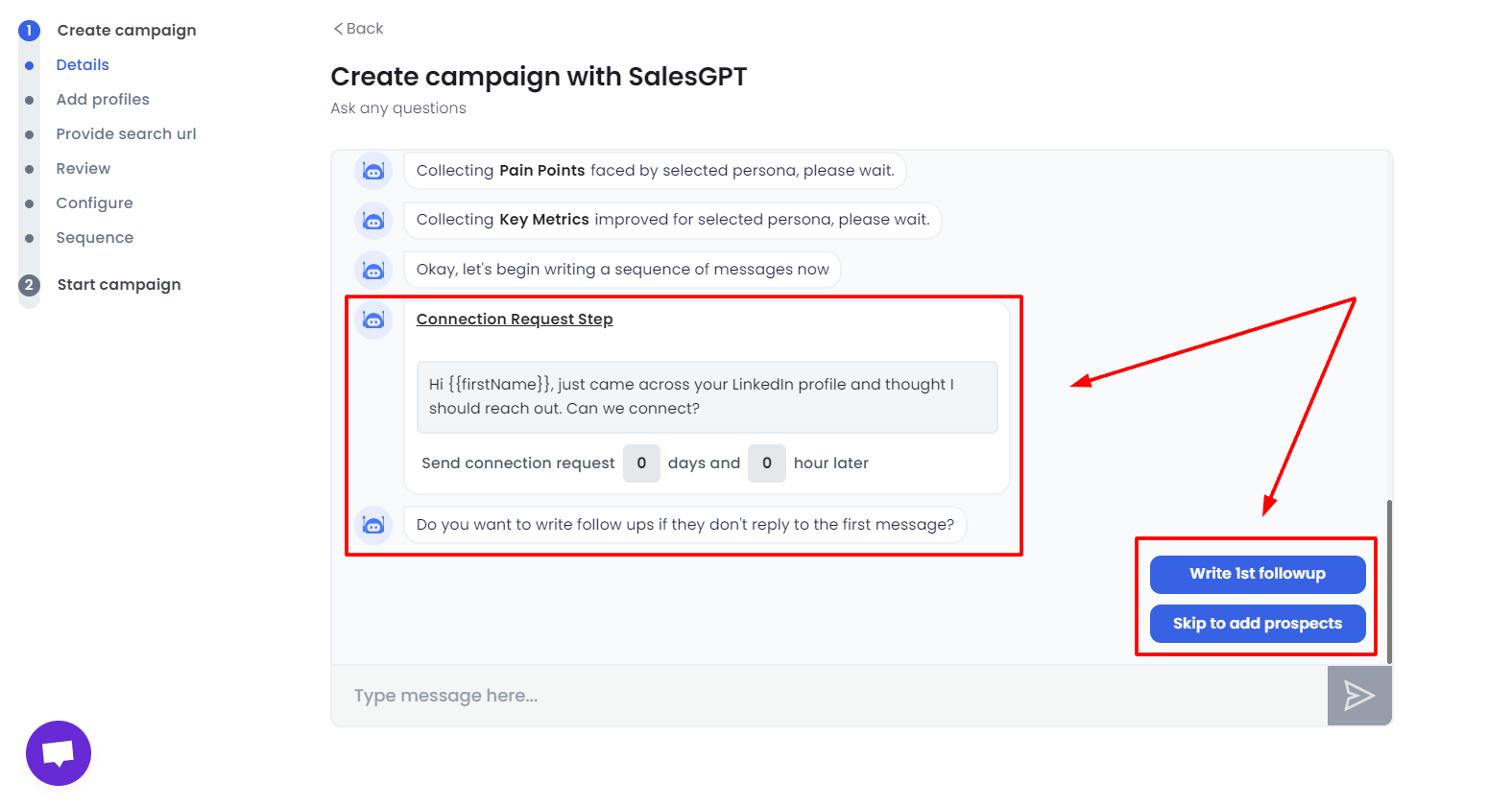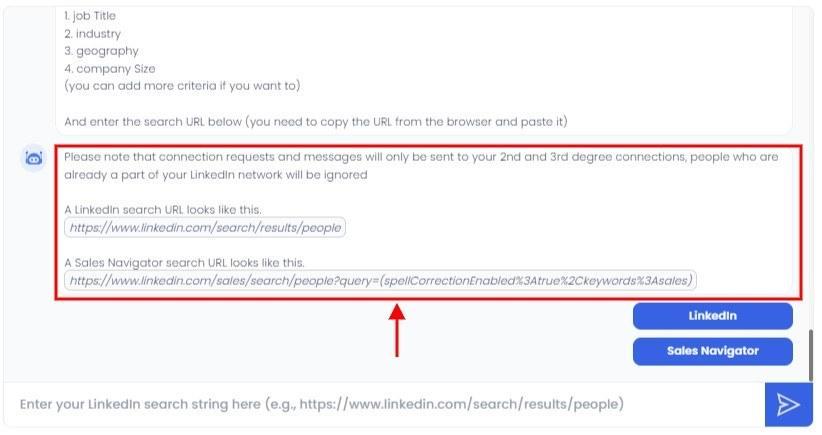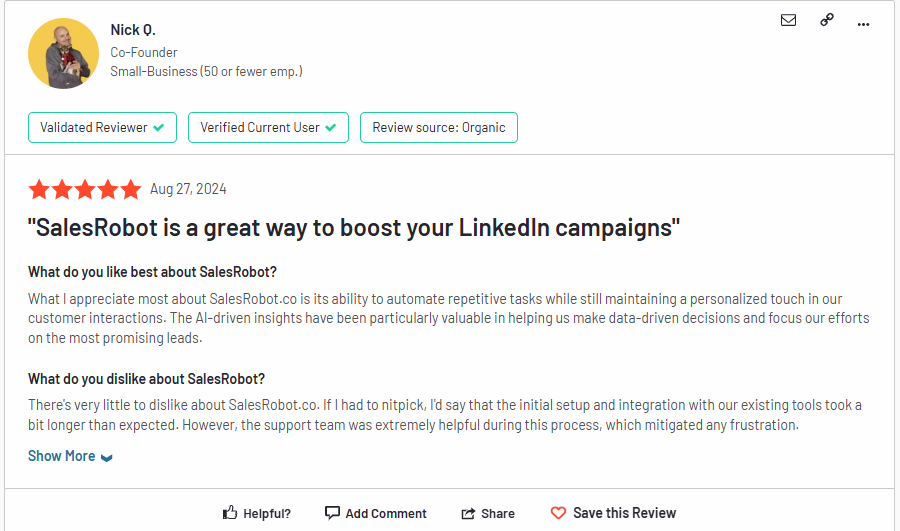You probably didn’t think much of job titles on LinkedIn.
I don’t think anyone did, but I was curious and updated my LinkedIn profile.
Within days, I was getting messages from all sorts of LinkedIn recruiters!
LinkedIn job titles are vital if you want to stand out among the hiring crowd and ACTUALLY get noticed by employers.

LinkedIn recruiters were reaching out to me for job roles that matched mine.
I realized LinkedIn job titles are crucial for unlocking new opportunities and capturing employers' attention.
In this blog, you’ll learn:
❓What are LinkedIn Job titles?
❓ Why are LinkedIn Job titles Important?
⚒️ How do you change your Job title on LinkedIn?
😲 Formula for creating a catchy LinkedIn job title.
Let’s get started!
{{mobile-cta}}
What are LinkedIn job titles?

A job title on LinkedIn communicates your specific job position and reflects your seniority and status within a company hierarchy.
In simple terms, it conveys what role you have in an organization.
A good job title can help you get new job opportunities and get noticed by hiring managers (BIGGER paycheck!)

Now, if you’re worried about what job titles to put on LinkedIn,
Here are some popular LinkedIn job titles:
👉🏼Information Technology (IT) Sector:
- Software Engineer
- Data Scientist
- Cybersecurity Analyst
- Network Administrator
- UX/UI Designer
👉🏼Healthcare Sector:
- Registered Nurse (RN)
- Physician
- Medical Assistant
- Pharmacist
- Physical Therapist
👉🏼Finance Sector:
- Financial Analyst
- Accountant
- Investment Banker
- Financial Advisor
- Risk Manager
👉🏼Education Sector:
- Teacher
- School Administrator
- Curriculum Developer
- Educational Consultant
- School Counselor
👉🏼Marketing and Advertising Sector:
- Marketing Manager
- Digital Marketing Specialist
- Public Relations Specialist
- Social Media Manager
- Content Creator
👉🏼Engineering Sector:
- Civil Engineer
- Mechanical Engineer
- Electrical Engineer
- Aerospace Engineer
- Chemical Engineer
👉🏼Legal Sector:
- Lawyer
- Paralegal
- Legal Consultant
- Corporate Counsel
- Compliance Officer
👉🏼Human Resources (HR) Sector:
- HR Manager
- Talent Acquisition Specialist
- Training and Development Manager
- Compensation and Benefits Analyst
- HR Generalist
👉🏼Sales Sector:
- Sales Representative
- Account Manager
- Sales Manager
- Business Development Executive
- Inside Sales Representative
👉🏼Creative Arts and Design Sector:
- Graphic Designer
- Art Director
- Fashion Designer
- Animator
- Photographer
A well-written job title on LinkedIn shows your dedication to the career and a sense of professional standing within your industry.
They trust you and your skills better if your job title is appealing, which also means that:
- They’ll connect with you,
- DM you, and
- Try to ask you for your insights.
{{mobile-cta}}
How to change a job title on LinkedIn?
I’ve shared some of the most searched job titles on LinkedIn, but the question remains:
How do you change job titles on LinkedIn?
There are 2 easy ways to do it:
1. Web Browser
Here’s how you can do it:
1. Visit LinkedIn and log in.
Then move the cursor to the right side of the ‘Me’ tab and click ‘View Profile.’
2. Click on the ‘Edit’ (pen) Icon right beside your name.

3. In the pop-up window, click on the ‘Profile Title.’
If you have creator mode turned on, click on ‘Headline.’

4. Write a catchy job title and click Save.
2. LinkedIn App
Here’s how you can do it:
1. Open the LinkedIn app on your phone.
2. Click on your profile picture and click on your profile details.

3. Click the ‘Pen’ icon on the right side of the page.

4. Write a headline you want in the title field.

5. Click on the ‘Save’ button at the bottom.
{{mobile-cta}}
5 reasons why LinkedIn job titles matter
Still thinking, “How does a job title matter?”
Here are five reasons why everyone should add a catchy Job title on their LinkedIn profile:
- Clear Communication:
Job titles convey a clear and quick message about someone’s role, both inside and outside the company.
This is especially helpful on LinkedIn, where it helps people understand your professional background and skills.
- Higher Search Rankings:
If you use relevant keywords in your job title, it can make you more visible to potential employers or clients, increasing your chances of being found.
- Showing Seniority and Status:
Some people want their job title to show how important they are in a company.
This can be crucial for advancing in their careers and getting recognition within the company.
- Telling Your Story:
Your job title on LinkedIn can tell the story of your professional journey and show potential employers how experienced you are and where your career is headed.
- Industry Alignment:
Your job title on LinkedIn also helps you align with industry standards.
It communicates your role in a way that others in your field can easily recognize, making it simpler to connect with peers, join relevant groups, and engage in industry-specific discussions and opportunities.
How to craft an effective LinkedIn job title (with 5 examples)
An effective job title is crucial for attracting the right attention from the right employers or clients.
Your job title is the first thing people see when they visit your profile.
So, it needs to be both descriptive and compelling.
Here are 5 tips to help you create job titles that stand out:

- Be Specific:
You don’t want to be one of those 1000+ "Managers" or "Analysts" on LinkedIn.
So avoid using generic tiles.
Instead, be as specific as you are about your role.
Use titles like "Digital Marketing Manager" or "Financial Analyst" to clearly convey your role.
- Highlight Achievements:
In the end, your employer is interested in what you bring to the table.
So make sure to add your achievement.
For instance, "Sales Manager - Increased Revenue by 30%." or “I got 100K impressions on LinkedIn in 60 days”
- Use Keywords:
Incorporate relevant keywords from your industry.
This can improve your profile's visibility in searches.
For instance: "Software Engineer - Expertise in Java, Python, and AI Development."
- Consider Your Audience:
Tailor your job title to your target audience.
If you're seeking a new job, use titles that align with the positions you want to land.
For example: "Sales Associate Seeking Opportunities in Account Management."
- Stay Honest:
While it's essential to make your title appealing, you don't wanna exaggerate or misrepresent your role.
Authenticity is key.
For example: If you're a junior developer, don't claim to be a "Senior Software Architect."
Think of the job title as your introduction but one where you don’t introduce yourself.
10+ popular LinkedIn job title examples with FORMULA!
Here are the most popular LinkedIn job title examples:
💥[Keyword] Expert: e.g., "Marketing Expert" or "Sales Expert."
💥[Job Title] | [Key Skill]: e.g., "Operations Manager | Supply Chain Expert."
💥[Keyword] Specialist: e.g., "Project Specialist" or "HR Specialist."
💥[Job Title] with [Years of Experience]: e.g., "Financial Analyst with 5 Years of Experience."
💥[Keyword] Manager: e.g., "Accounting Manager" or "Social Media Manager."
💥[Job Title] - [Specialization]: e.g., "Sales Representative - B2B Sales."
💥[Keyword] Analyst: e.g., "Financial Analyst" or "Data Analyst."
💥[Job Title] at [Company]: e.g., "Marketing Coordinator at XYZ Corp."
💥[Job Title] | [Certification]: e.g., "Registered Nurse | RN."
💥[Job Title] in [Location]: e.g., "Human Resources Manager in Chicago."
💥[Job Title] for [Industry/Field]: e.g., "IT Support Specialist for Healthcare."
💥[Job Title] & [Job Title]: e.g., "Product Manager & Business Analyst."
How to reach out to people with a particular job title on LinkedIn?
If you’re in charge of sales outreach or are trying to target particular job roles, this method will be super helpful.
The basic way would just be searching for the job title on LinkedIn Search and manually sending messages or connection requests to everyone.
But this is going to cost you tons of time and manpower, especially on a large scale.
The solution?
It can completely automate your LinkedIn + Email outreach with hyper-personalized message campaigns, follow-ups and even AI Lookalike features.
You can use SalesRobot and target any job title and send out a mass-messaging campaign that runs completely automatically.
The best part is, it takes 2 minutes to set up!
- Click on Create Campaign

- Use our SalesGPT AI to help guide you through the process.

- Specify the job titles and roles you’re searching for by giving some info to SalesGPT

- Draft your ideal message sequence.

- Add your search URL from Sales Nav or LinkedIn Search

- For example, if we’re searching for a sales manager in a tech field. We can use “Sales manager AND tech” as our search query and filter by “People”.

- Copy paste the search URL.

- Paste it into SalesRobot

And just hit on “Start Campaign” and relax!
SalesRobot runs on the cloud so it will be active even if your computer is shut down, and it’s even got a Safe mode to keep safe from LinkedIn restrictions.
On top of that, each message campaign is hyper-personalized for every prospect so you get much higher chances of a response.
You just have to sit back and chill while the leads flow into your inbox.
Pretty convenient right? You can even see the results for yourself in a 14-day free trial (We don’t ask for credit card)
Conclusion
Let’s quickly summarize what we have learned so far.
LinkedIn job titles are not just a simple description; they shape your professional identity, influence potential employers, and attract opportunities.
💣We learned how easy it is to change a LinkedIn job title and how it can be done via web browsers and the LinkedIn app as well.
💣We also learned why having a job title is important for your profile.
If confused about how to write a job title, you can pick a formula mentioned above that highlights your expertise the most.
And if you’d like to take a more active stance on finding these employers or clients, consider SalesRobot.
It’s a fantastic LinkedIn + Email automation tool which will do all your outreach, campaigns and follow-ups completely on its own!
Using SalesRobot, you can easily target any job titles and even get more specific about locations, network, company, job description etc.
The important part is that it will actually get you consistent leads, with basically no effort needed on your end!
If you don’t believe me, you can check out our glowing reviews on G2

If you want to see the results for yourself, we’ve got a 14 day free trial (We don’t ask for credit card or phone number)
Thanks for reading, hope you learned something new!


